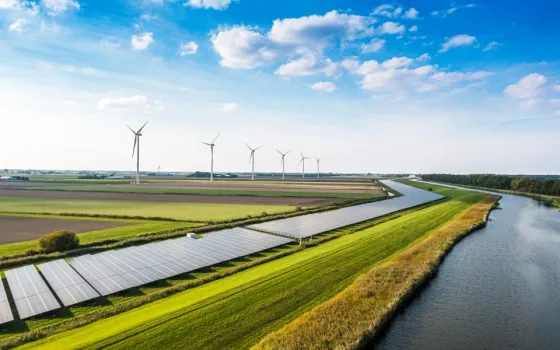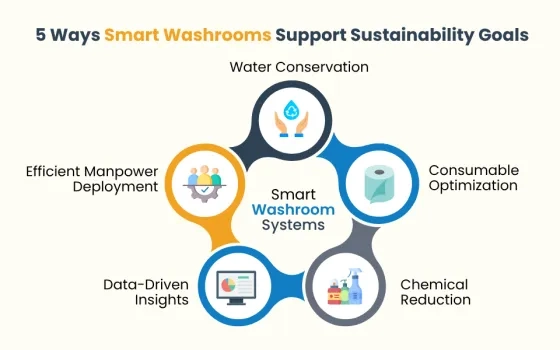With the climate crisis gathering pace, many companies are turning to building sustainability plans and incorporating measures like switching to renewable energy sources and discontinuing single-use plastic. However, the operational side is equally vital.
Large and small enterprises are taking a serious look at how they contribute to environmental damage as well as how they are impacted by the changing climate. This includes evaluating the physical risks of operations, markets, and supply chains and the transition risks of moving towards fostering a low-carbon economy.
In addition, climate change alters corporate assets, and businesses must understand their potential exposure to stranded assets. They should also determine how to value their enterprise in terms of future income statements and cash flows.
Understanding Green Finance
Green finance is gaining momentum across the globe as a critical tool for transitioning toward net zero emissions. The integration of environmental concerns into financial decision-making is essential for sustainable development. Initiatives such as green bonds, carbon pricing, and sustainable investment frameworks are driving this shift to cultivate a greener economy.
Green finance, referred to as sustainable or responsible finance, enables enterprises to effectively finance projects with environmental benefits, like improving energy efficiency and reducing greenhouse gas emissions.
Read more: SFDR: Understanding EU’s Sustainable Finance Disclosure Regulation
And with sustainability becoming a cross-policy and sector-wide agenda, there is growing awareness of green finance and its crucial role in the transition to a net zero economy. But the idea of green finance is still in the evolving phase. Most international banks have started offering green loans with profitable terms for businesses investing in sustainable projects.
However, companies with a long-term view need to pay attention to a less visible but important piece of the sustainability puzzle: green finance. Climate impacts finance, and it also alters an organization’s fundamentals with further consequences for the financial sector along with the investors. Finance also impacts climate - with investors mandating credible sustainability strategies and financial institutions presenting new frameworks with environmental terms. Green bonds are considered among the first instruments to emerge. There is a developing portfolio of green financing options available that businesses should be aware of. These include:
-
Green bonds, whose structure is identical to other bonds, except that they commit the issuer/borrower to use the funds for green projects or business activities.
-
Sustainability-linked bonds are critical to accomplishing predefined environmental, social, and governance (ESG) goals.
-
Transition bonds and debt securities are issued by industries with high greenhouse gas emissions in order to raise capital to fund the shift to a greener organization.
-
Project finance involves setting up off-balance sheet items and shifting the investments to a special-purpose vehicle. They are also becoming an increasingly important source of funds for renewables and environment-related projects.
-
Supply chain financing helps in achieving agreed-upon sustainability standards and performance.
Green bonds help in financing environmentally friendly projects. And venture capital firms and private equity investors are funding start-ups and early-stage companies with a focus on sustainability. And the realization across various organizations as well as policymakers is further aiding this transition with significant investment.
Read more: ESG and Impact Investing: The Future of Responsible Finance
Why Should Organizations Consider Green Finance?
Retailers, manufacturers, financial corporations, and high-tech organizations are reaping the financial rewards of taking their businesses on the path of eco-friendly investments. Sustainable investment decisions take into account the environmental, social, and governance (ESG) factors of economic projects. They are benefiting from tax breaks, government subsidies, and increased popularity through their standing as green organizations. Due to this reason, eco-friendly business practices are emerging as cost-effective, smart, and responsible goals. But to create a more sustainable future requires an all-hands-on-deck approach from major industries. This is where sustainable finance finds its importance.
The financial sector today carries enormous power in funding and generating awareness on issues related to sustainability. It is further allowing the development of alternative energy sources or funding businesses that follow fair, sustainable practices. Environmental factors, such as mitigation of the climate crisis or integration of sustainable resources, help in cultivating a sustainable and diverse framework.
Green Finance: Opportunities and Challenges
Green companies and enterprises are more appealing to clients, customers, and employees. And this appeal is growing rapidly across industries. An organization can increase its sales to new customers that prefer to make a purchase from green businesses. And with employees and consumers recognizing and placing increasing value on environmentally friendly products, it makes sense for every organization to explore green finance.
Green finance provides opportunities to both companies and financial institutions. Businesses that green their finances are recognized to showcase their commitment to their own longevity. They are also responding to directives from stakeholders, including consumers, regulators, and investors. It also presents an opportunity to mobilize the organization internally and integrate the commitment to green finance externally. And at the same time, there is an urgent need for global standards on accounting and disclosure for sustainability measures to be transparent.
Read more: The Future of Corporate Sustainability: 2023 Predictions
Today, financial institutions have the opportunity to create and offer these instruments that support green finance. The global issuance of green, social, and sustainability-linked bonds is expected to grow by 10% in 2023 to approximately $950 billion. And green bonds are specifically expected to represent a $550 billion share. While accounting standards and contingent loan rates can seem less appealing to businesses, those looking to be truly green should not ignore the grey world of finance.
Future of Green Finance
With the demand for green finance growing, countries across the globe are expected to witness more innovative financing solutions and investment opportunities. This push for sustainable development and the growing need among businesses and investors to foster strong, sustainable credentials has compelled governments to introduce guidelines for banks and non-bank financial companies for green deposits. The purpose is to ensure that funds are used for energy efficiency, climate change adaptation, clean transportation, sustainable management, green buildings, and biodiversity conservation.
While anticipating action on green financing and policy pushes for green financing instruments from the government, it is important for private sector organizations to integrate and adopt internal carbon pricing as well as promote investment in green technologies and solutions.
Sustainability today is a major challenge, one that goes beyond individual companies. However, a reassuring number of large enterprises are developing forward-thinking sustainability policies to integrate and foster green finance practices. It is therefore becoming clearer that sustainability is a megatrend that isn't going away!
Read more: ESG Strategy for Growth: Embedding ESG in the Business Model
Conclusion
Today, green finance and other modes of sustainable investments are gaining standardized definitions and measurement frameworks. Visibility in performance and impact assessment is equipping businesses with a selection of sustainable funds. The use of technology in tracking emissions and reporting requirements and governance assists in fine-tuning and improving transparency in companies’ green credentials, thus strengthening investor confidence and quelling the fears of greenwashing.
However, there is still a need for greater transparency and standardization around relevant metrics as well as their impact on financial performance. While green finance may not seem like a silver bullet to address environmental and social challenges, it is emerging as a critical component to promote sustainable and responsible investment practices. It is further encouraging companies to prioritize these issues, thus ensuring the effective rollout of innovative green financing mechanisms to boost the transition to a net zero economy.


















